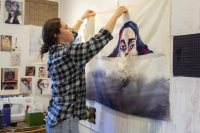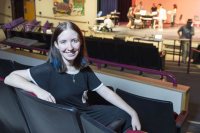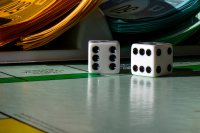
A week ago, much of the artwork destined for the 2024 Senior Thesis Exhibition in the Bates College Museum of Art could be found in various studio spaces in the Olin Arts Center.
For the eight senior artists, moving their artwork from studio spaces into the museum for a professional exhibition is like having their name up in lights. A visitor approaching the double glass doors of the museum sees the names of all eight seniors displayed in big block letters on the gallery wall facing the doors.
“This moment validates what is possible. And that’s a really amazing thing.”
Michel Droge
Whether an artist’s name is in lights on a Broadway marquee or on a Bates museum wall, the effect is the same, says Michel Droge, one of the Bates faculty members helping the seniors display their work in the popular annual exhibition.
“Seeing your name in big letters when you first walk in, or on a poster or postcard, really solidifies the idea that ‘I can do this. I can do this for a living.’ Sometimes people are like, ‘Oh, being an artist is too hard of a life,’ or whatever. This moment validates what is possible. And that’s a really amazing thing.”
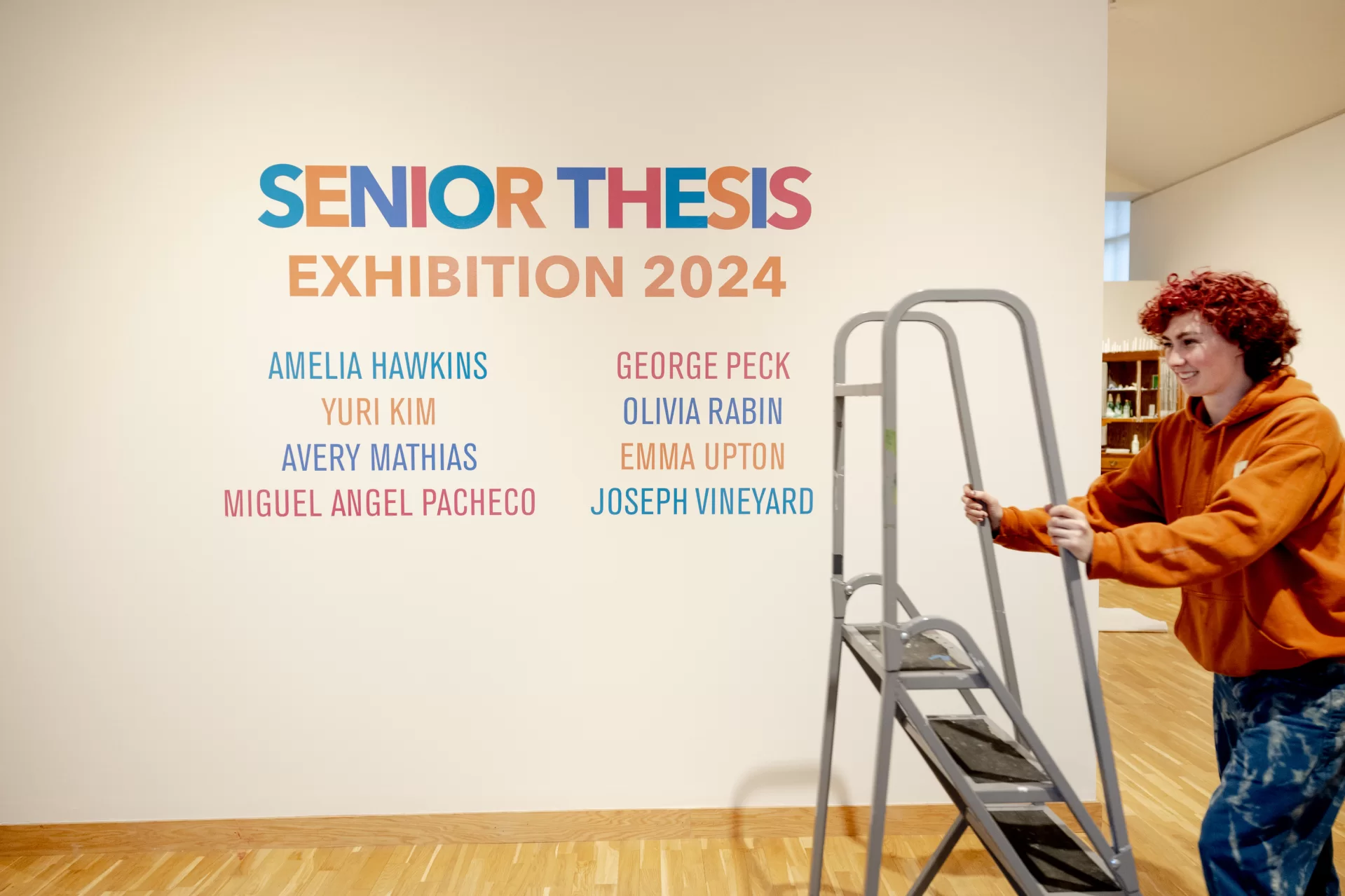
This year’s Senior Thesis Exhibition, on display through May 25, features seniors working in paint, mixed media, digital animation, and installation/performance.
In moving just a few hundred feet from those studios into the museum’s galleries, the artwork, has traveled into a new dimension. It’s now in community — alive and almost begging for conversation.
“Since they moved their work into the museum, we’ve been talking about how everybody’s work is sort of bouncing off each other’s,” says Droge, a visiting assistant professor of art and visual culture. “They saw that when they were working in the studios, but you can really see the conversation happening now.”
Droge pointed to a piece of driftwood on a pedestal, which accents a presentation of oil paintings by George Peck ’24 of Philadelphia that recall a camping trip along the Down East coast. Nearby are oils by Amelia Hawkins ’24 of Sun Valley, Idaho, that capture the phenomenon of forest fires in Idaho.
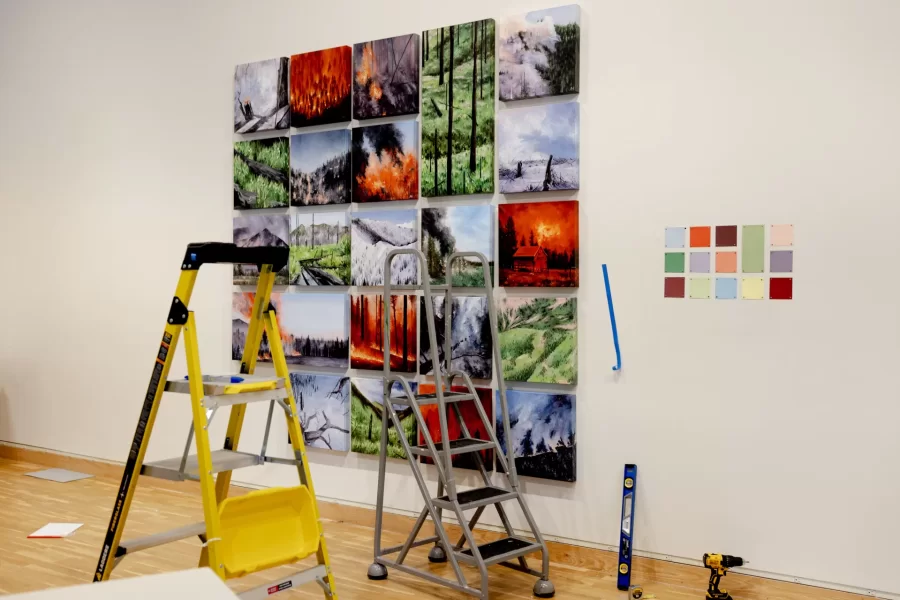
In some of Hawkins’ oils, “the way the [tree branches] are painted and drawn relates to the driftwood,” says Droge. “Then you look at the driftwood and then look at Emma’s work.” That’s Emma Upton ’24 of Amherst, N.H., who used drawn self-portraits to create mixed-media abstractions. “There’s all sorts of back and forth. And all of the work is transformative.”
Droge has supported this week’s installation of the show in the museum. The students’ advisors are Associate Professor of Art and Visual Culture Carolina Gonzalez Valencia (fall semester) and Senior Lecturer in Art and Visual Culture Elke Morris (winter semester).
— Jay Burns
Amelia Hawkins
The oil paintings of Amelia Hawkins ’24 of Sun Valley, Idaho, capture the phenomenon of forest fires in Idaho.
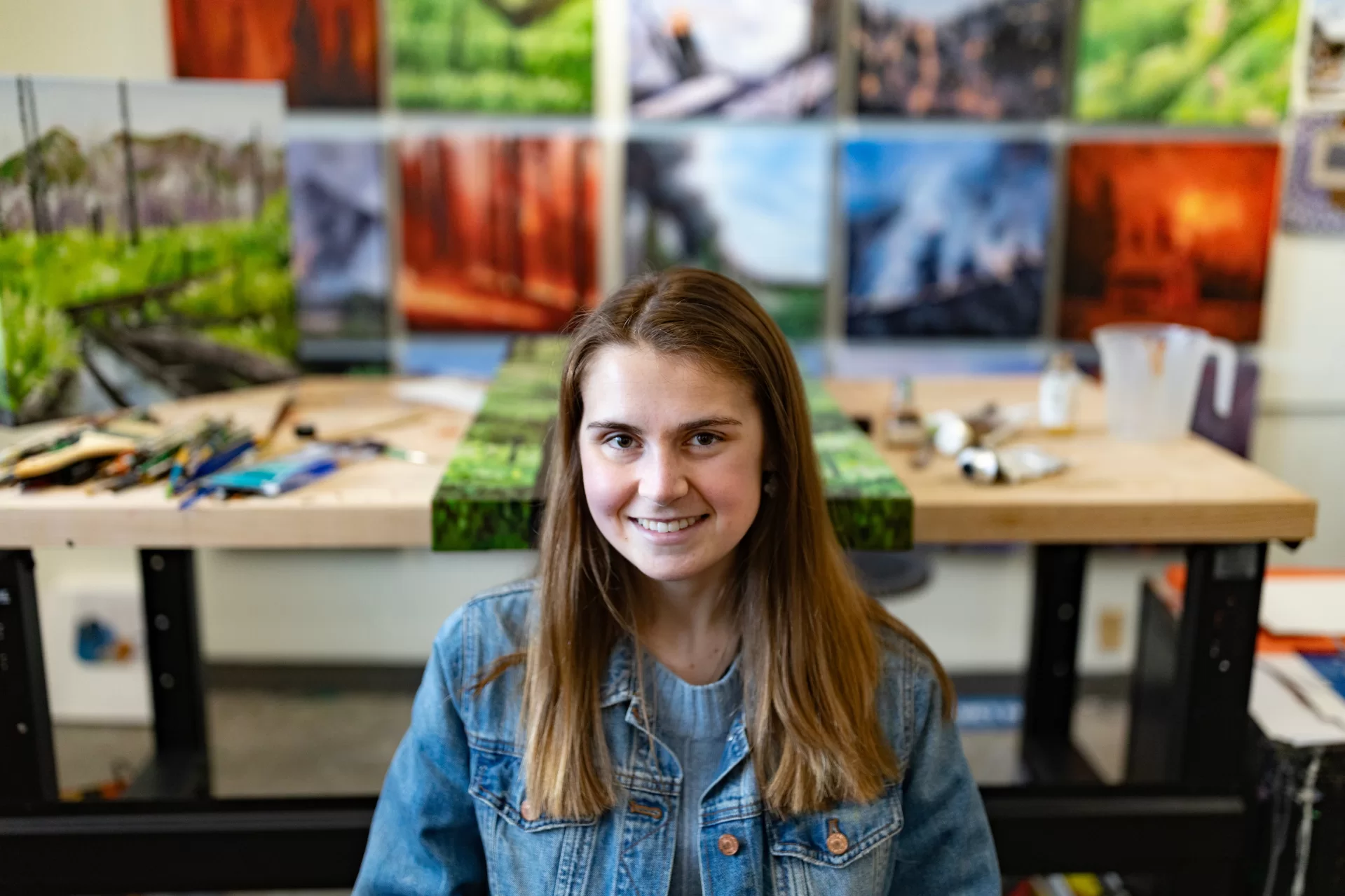
Fires have occurred for eons and can be part of a healthy forest ecosystem, but are now more frequent in the era of climate change. Hawkins recalls how in her childhood summer activities were canceled due to unhealthy air quality.
“Once August rolls around, smoke from forest fires rolls in,” Hawkins says. “I remember asking my mom, ‘Where are all these ashes coming from?”
Now such memories provide subject matter for her artwork. “I portray the various stages of forest fires. From the fiery inception to the tranquil regrowth, I’m captivated by the juxtaposition of chaos and serenity.”
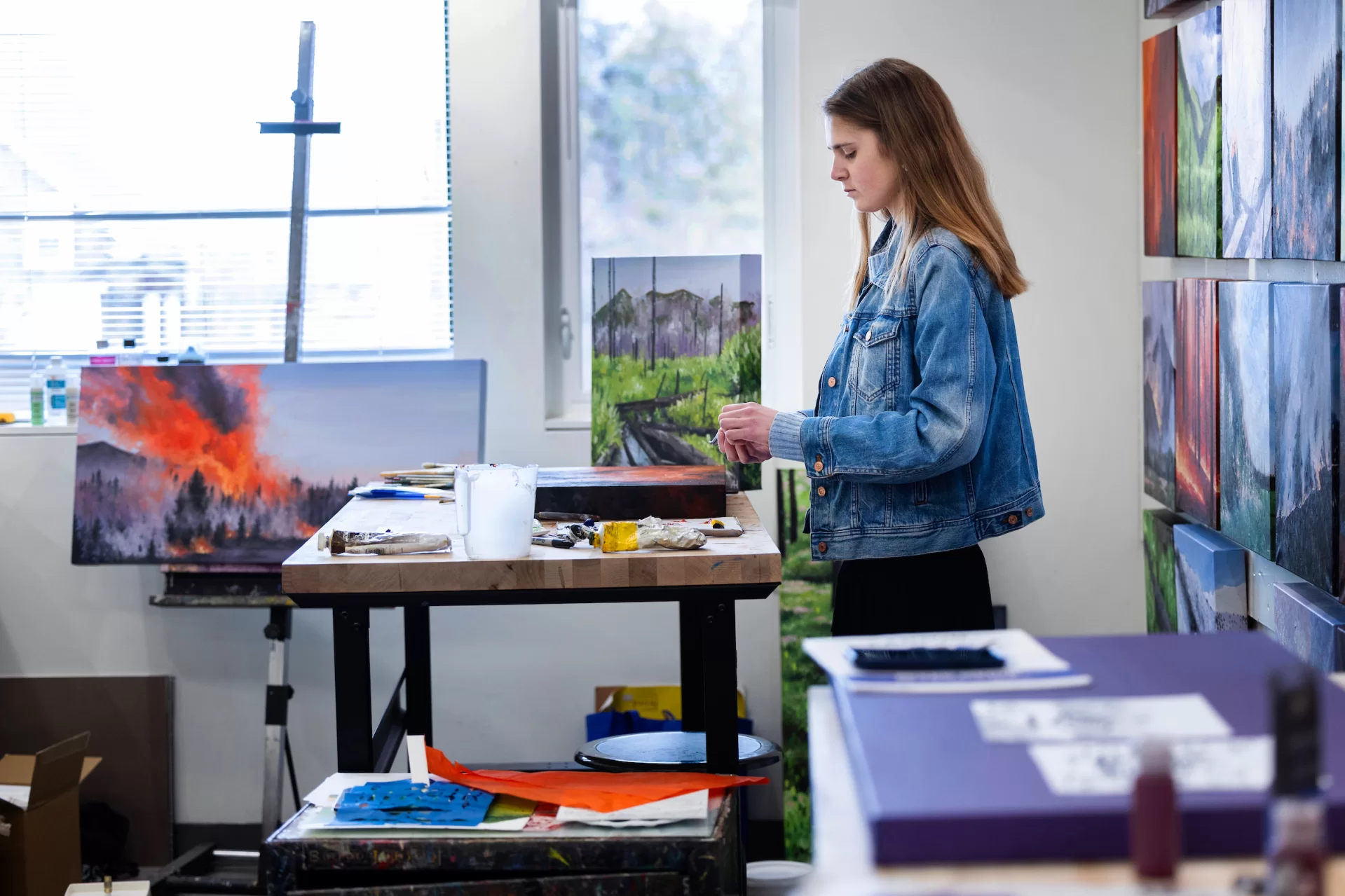
Yuri Kim
The senior thesis by Yuri Kim ’24 of East Brunswick, N.J., drew from a daydream and parallels her research into the colonial origins of Easter that has roots both in Europe and Pennsylvania. It was made through digital animation and compositing.
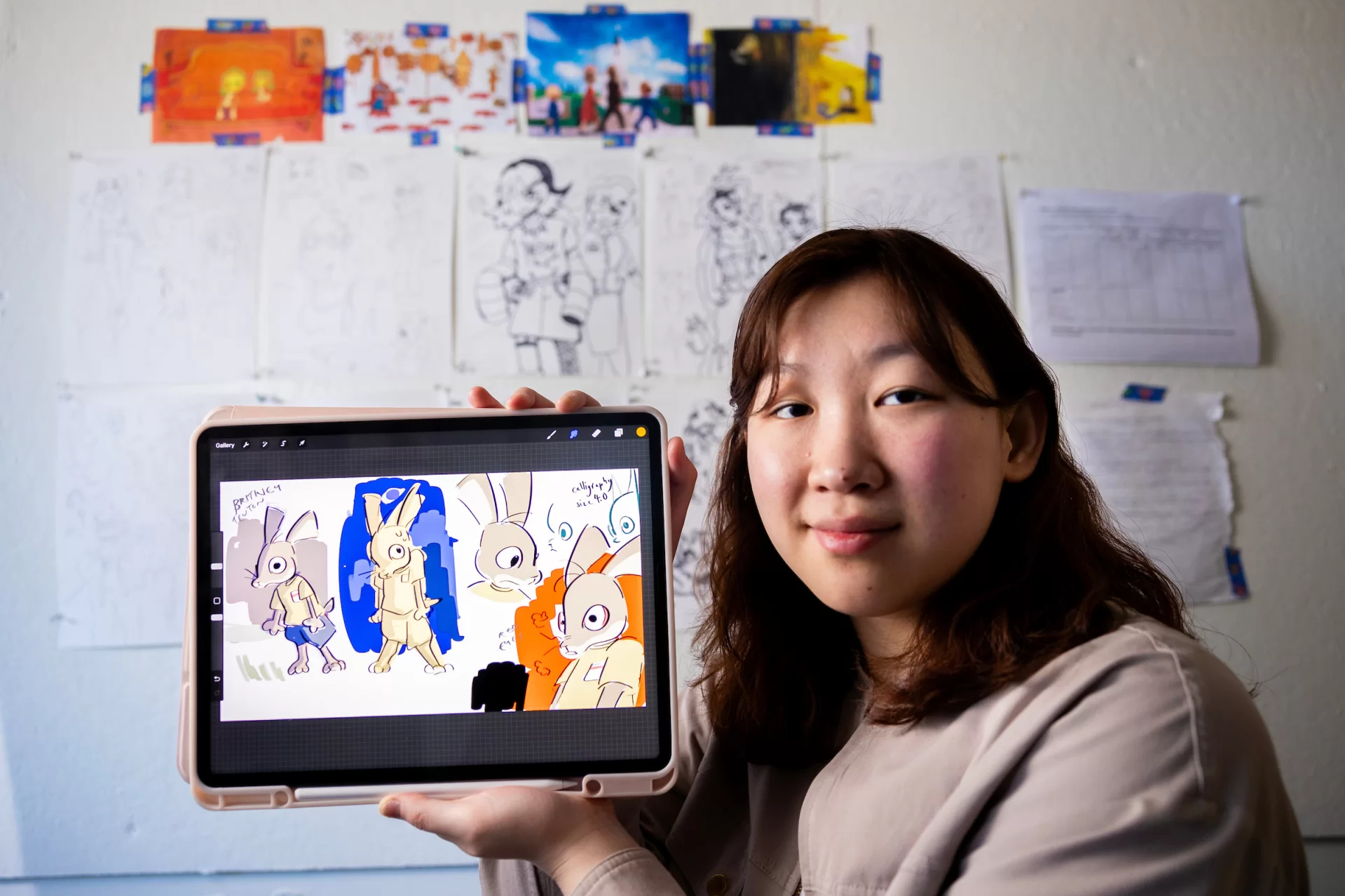
“I found repeated violences in the colonization of pagan traditions, the colonization of children’s innocence, and the colonization of the land. I hope you consider these parallels in the viewing of this work,” Kim says.
In the work, Kim considers how children interpret events in fascinating ways. “These interpretations are often rebutted, degraded, and dismissed by those around them. Sometimes, this is because the way children interpret things is not seen as particularly appropriate for the occasion.”
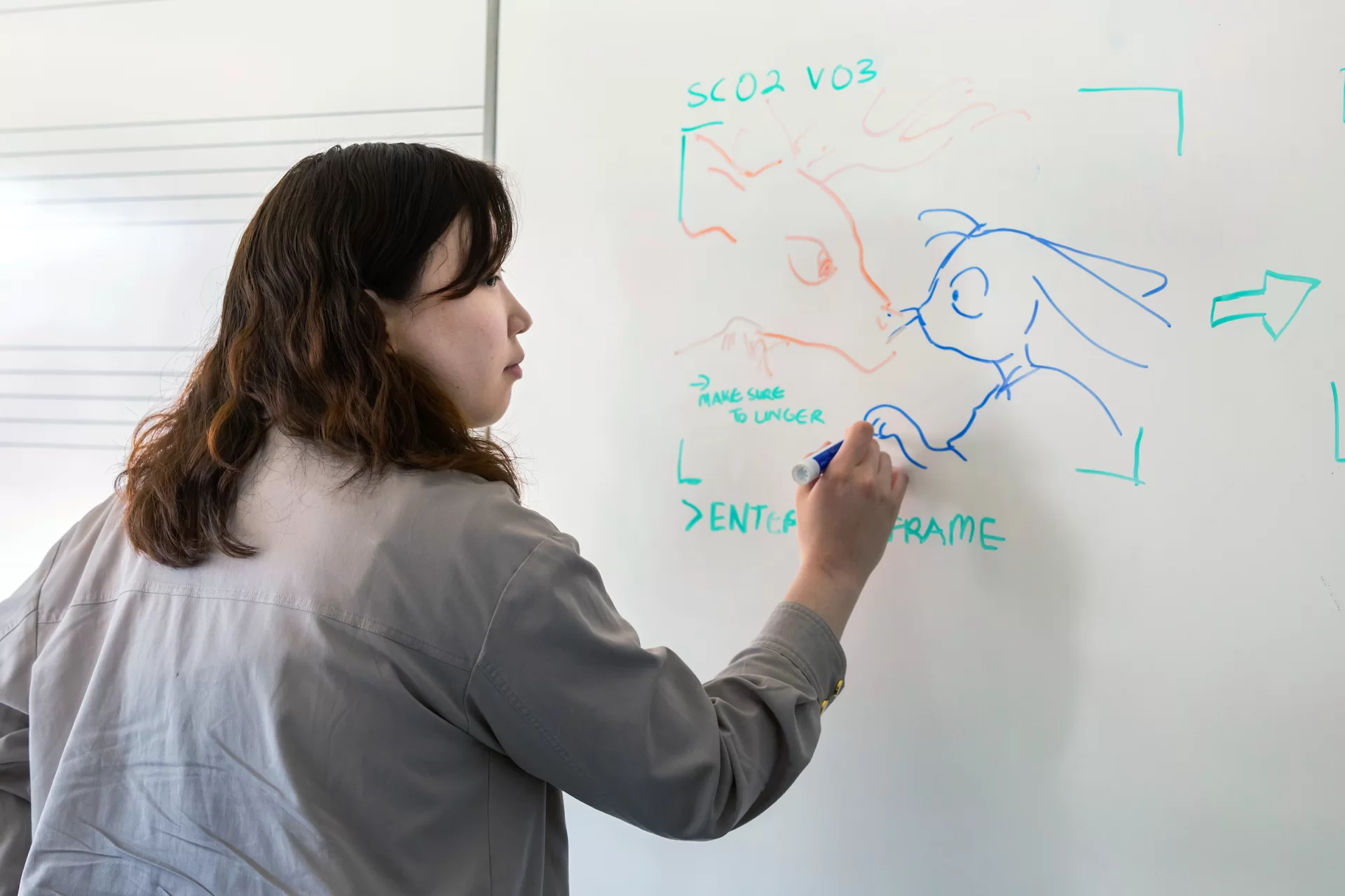
She explores “silliness, weirdness, discomfort, and inconsistencies” in her artwork.
“This work embraces these maligned apostles with its arms wide open. It sees the valuable things that lay inside children’s daydreams – eggs, waiting to be hatched,” Kim says.
Avery Mathias
Turning a common household object into art worth considering, Avery Mathias ’24 of Needham Heights, Mass., features the chicken egg in her recent oil paintings to illustrate how one can find “intrigue and beauty in the mundane.”
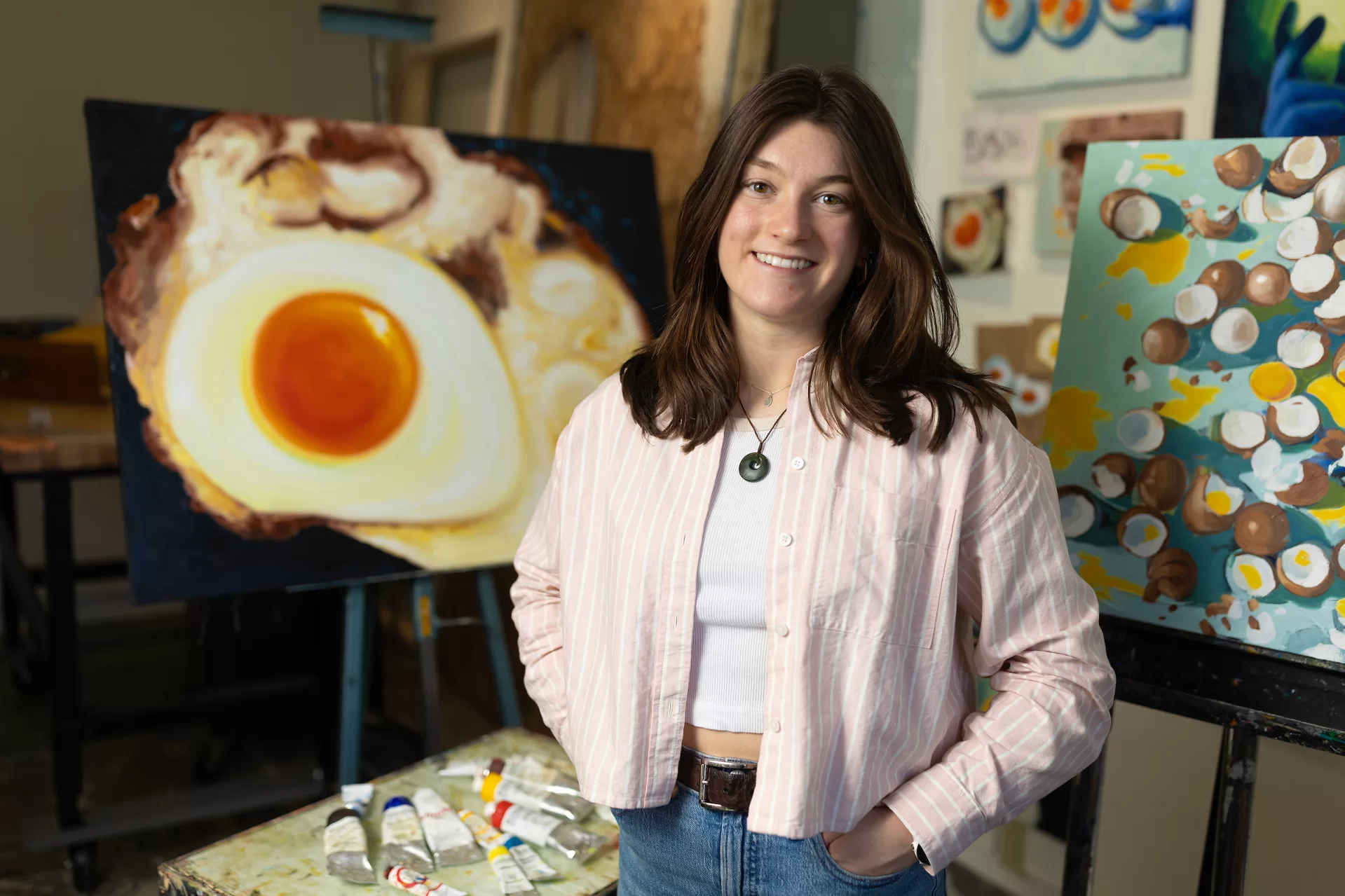
And as one who has fond childhood memories of making breakfast with her father on the weekends, Mathias wants to celebrate in her art how “a shared meal brings people together.”
Food and people’s relationships can inspire a range of emotions, Mathias points out. A single fried egg can evoke thoughts about health, life, routine, cooking, science, and sexuality, she says. Through the simplicity of her subject, Mathias endeavors to encourage viewers to bring their own associations.
As a biology major, she further wants to emulate the scientific perspective. So the eggs are painted larger than life to present the perspective of looking through a microscope. “To look at an object from a drastically different point of view made it infinitely more intriguing,” Mathias says.
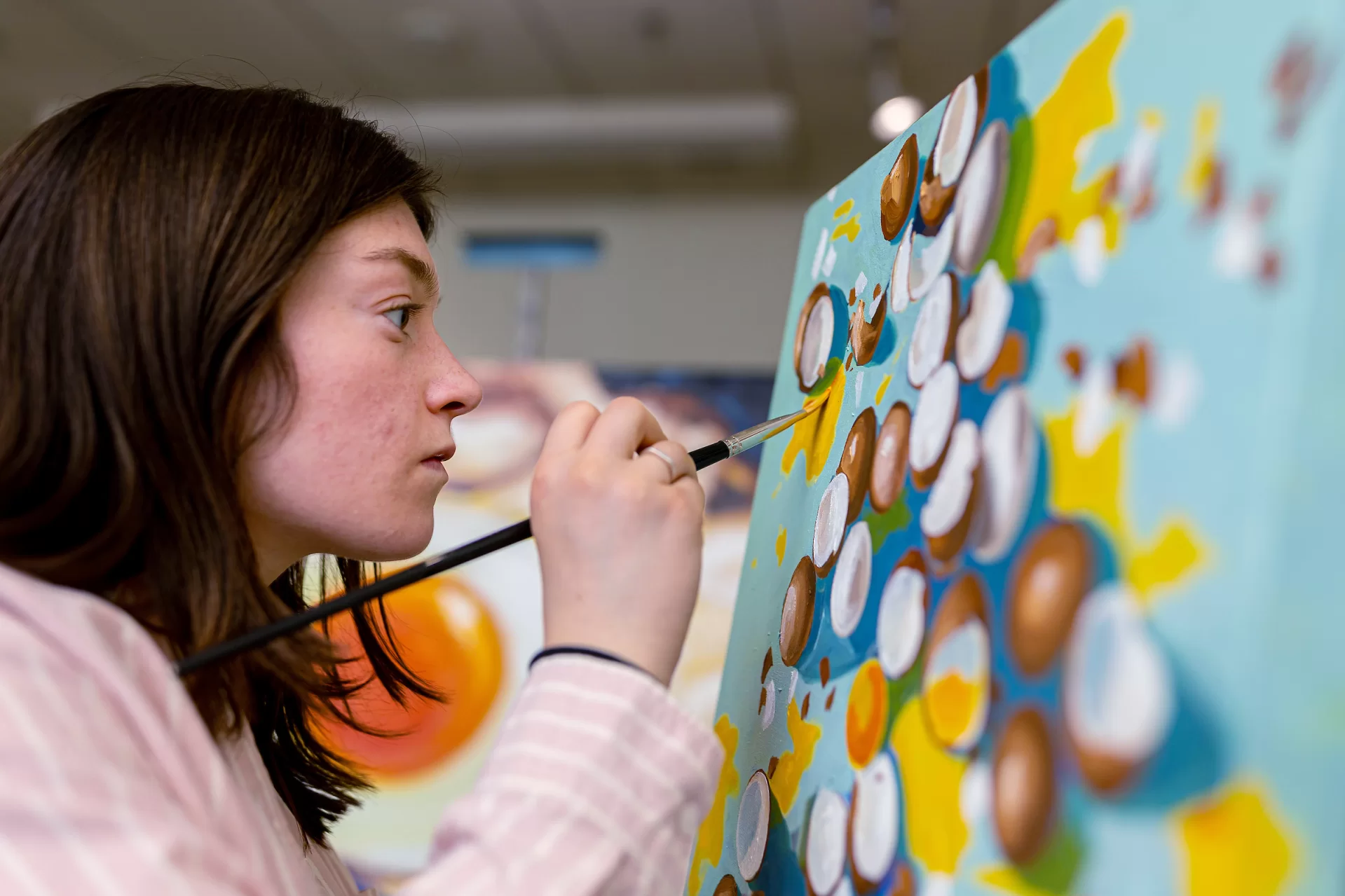
Miguel Ángel Pacheco
Using mixed media that includes wood, cardboard, sticks, and a suitcase, Miguel Ángel Pacheco ’24 of Caracas, Venezuela, says he consciously and subconsciously changed, rearranged, and transgressed these materials to create a work that serves as a way to summarize his years at Bates.
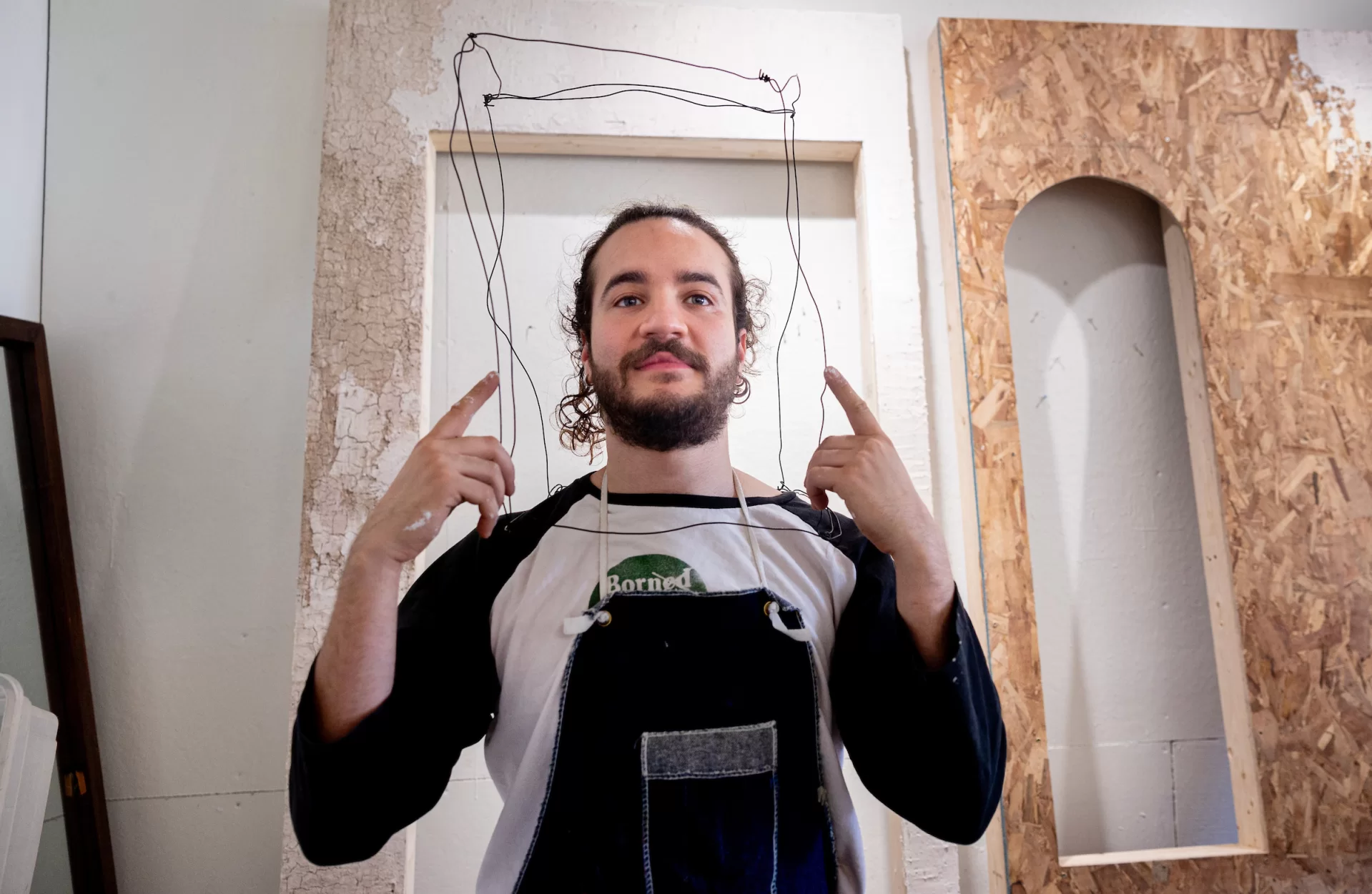
“I stand in the missing place in between. In the place of forgetting an expression in my mother tongue, or thinking twice about how my accent sounds nowadays. Or the doorway of my grandma’s house in Los Teques, the positioning of the door, or the plant next to it. The crossroad between where I am, what I remember and what I’m trying not to forget,” Pacheco says.
The body of Pacheco’s work combines gestures and found materials in the act of “approaching memory as an active verb… like the skeleton of a house, without walls, see through.”
“These are different scenes that I set for myself to remember or forget. Where actions occurred, materials and memories were boxed, carried and moved. They’re about movement, actions that I propose to myself, trying to understand the distance between here and there. The still remaining distance… deshilachandola,” Pacheco adds, using the Spanish word for “unraveled.”
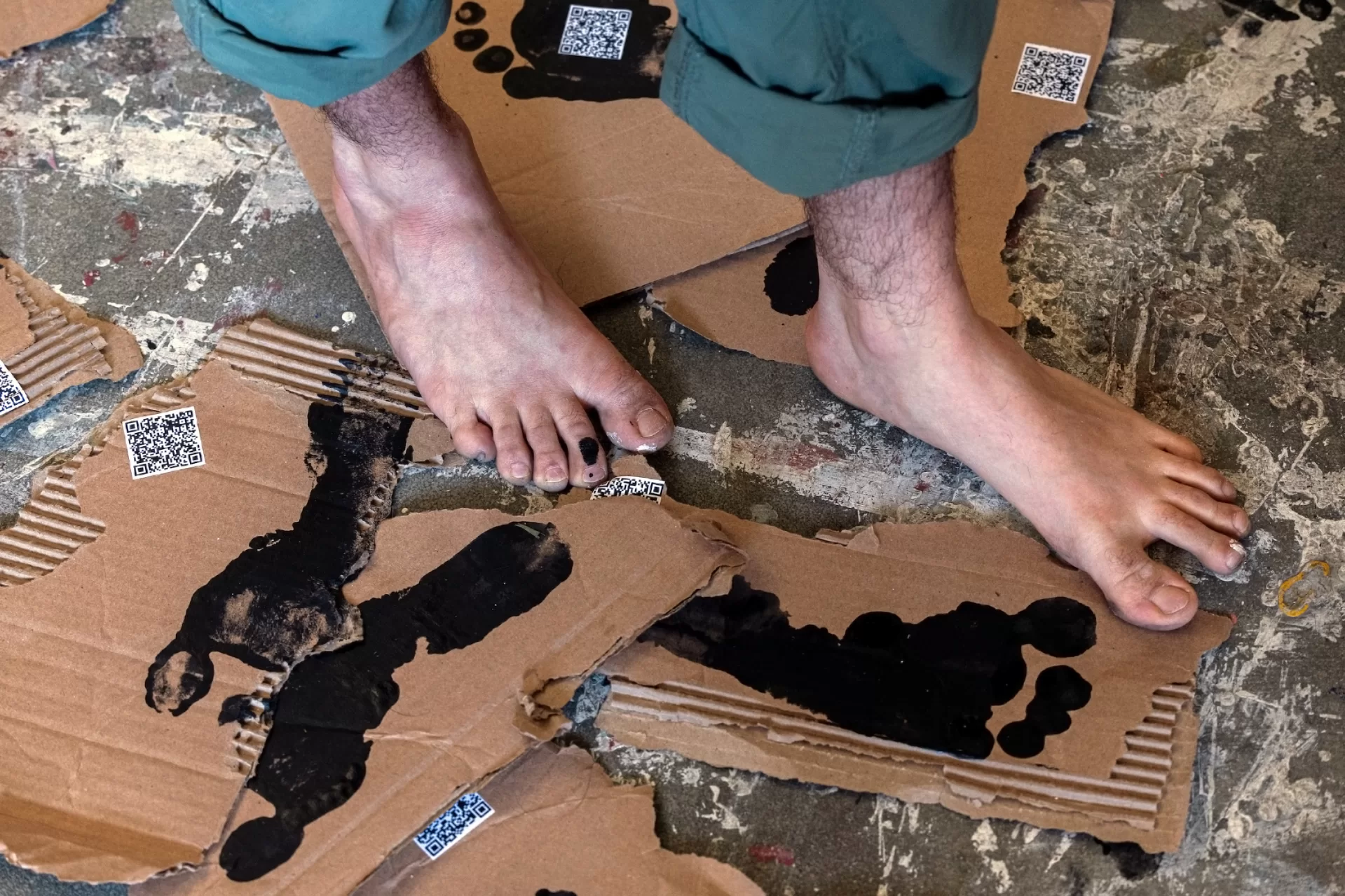
George Peck
The oil paintings by George Peck ‘24 of Philadelphia are based on his memories of a camping trip last fall to the Cutler Coast Public Land along the Maine Down East coast.
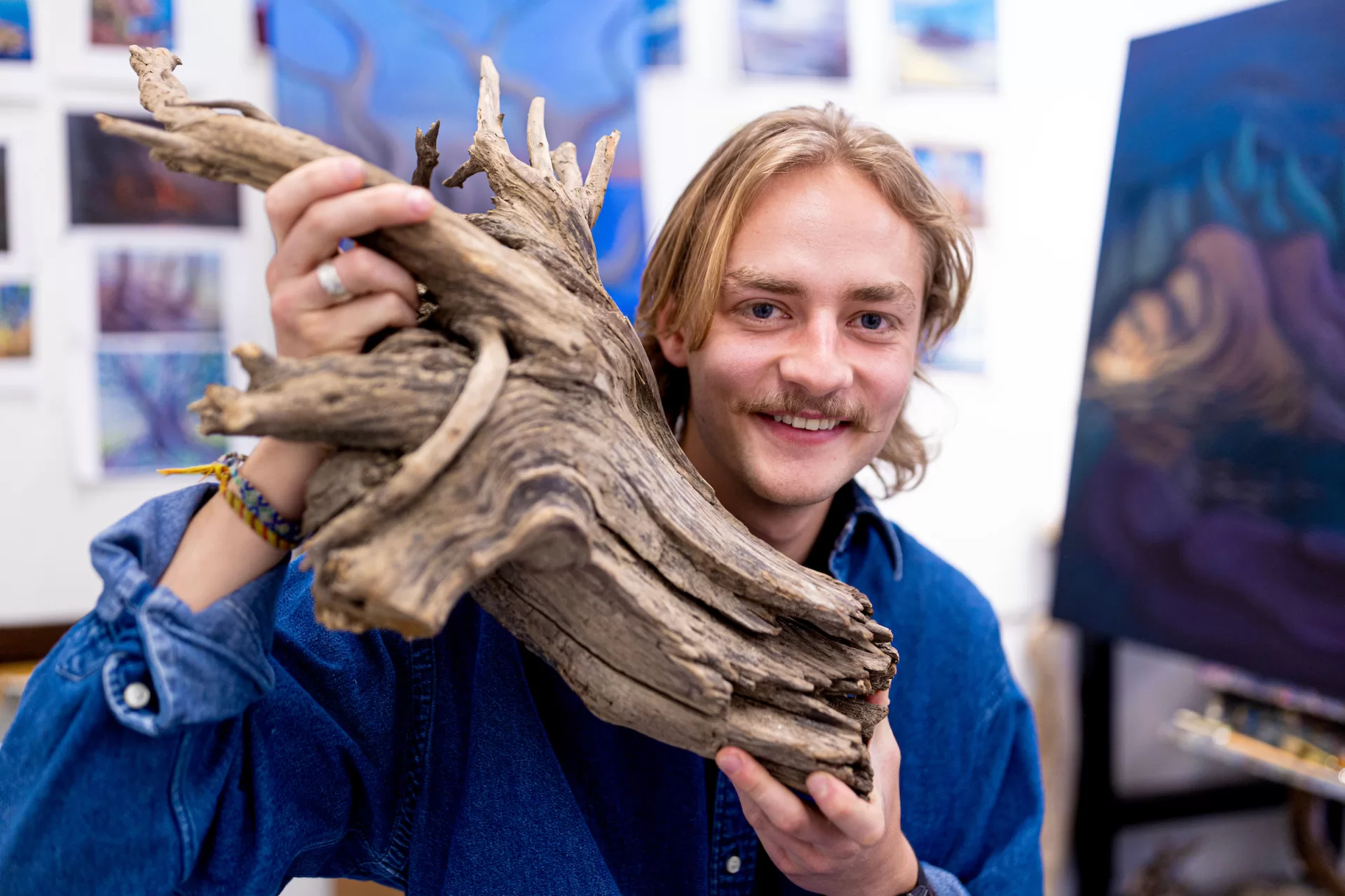
He took no photographs during the trip. “I am just building this world from the way that I remember it,” he says, using themes of driftwood and fire as metaphors for how the vivid moments that we experience become memories that shift, change, and sometimes fade away.
“After you’ve lived a moment and have a memory in your head, it’s subject to change. It’s impermanent — kind of loose and vague.”
Peck began collecting natural objects to create sculptures last fall. Driftwood becomes a focus for its beauty and the myriad of metaphors within it, such as the growth rings in a tree, which mark time.
He says the driftwood and dead weathered trees symbolize how a moment in space and time “dies” when the moment has passed. But, like a tree, an experience doesn’t ever truly disappear, “but rather lives on as its own subject.” Both memory and driftwood, Peck says, change shape over time.
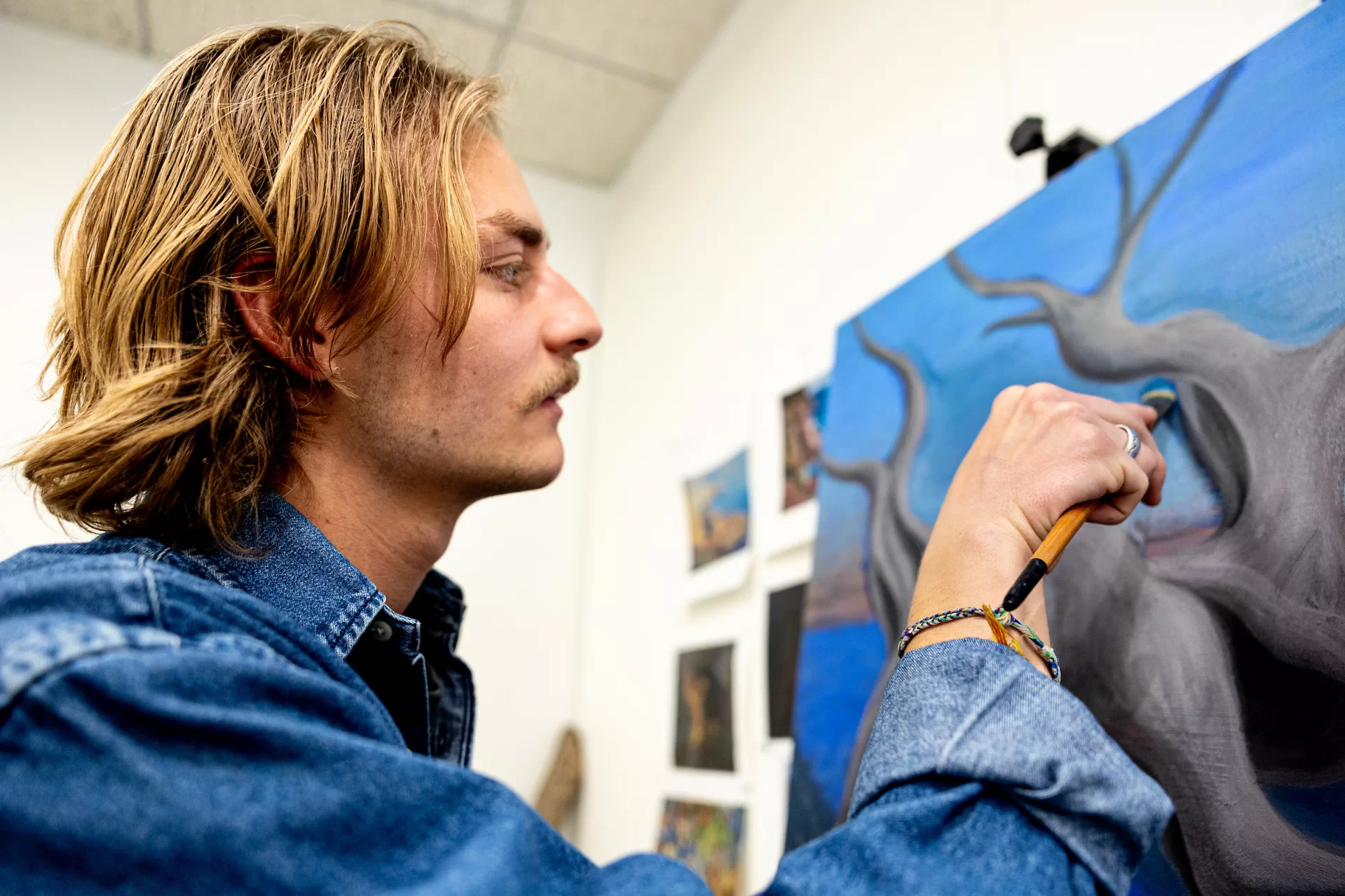
Olivia Rabin
Olivia Rabin ’24 of Montclair, N.J., wants to explore the emotions and sensations of the world around her and the experience of “being captivated by nature and the fantastical,” as illustrated in her mixed-media work using watercolor, wax, and graphite.
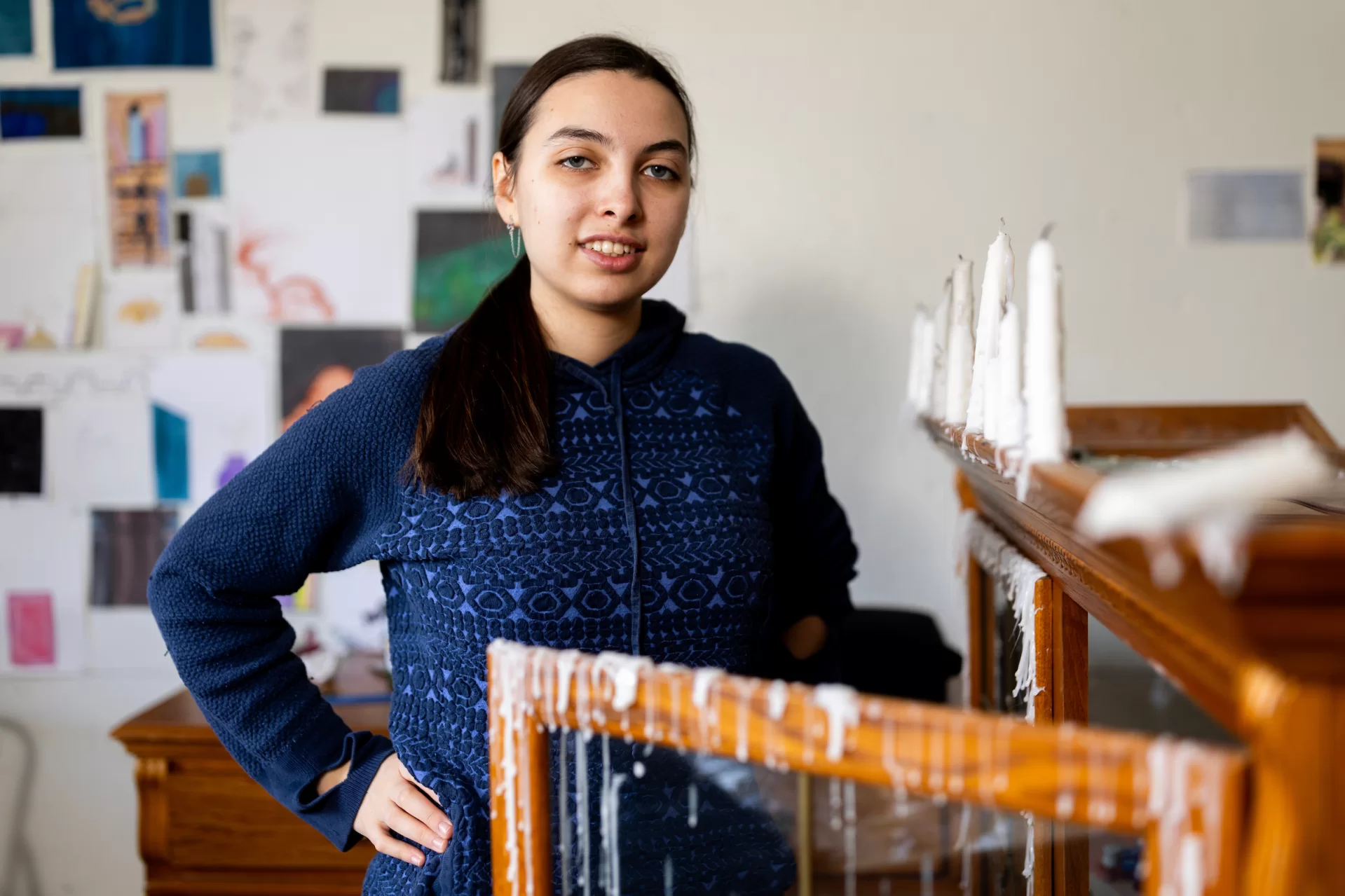
She is interested in illustrative and abstract work “rooted in reality while distorting it or finding new meanings.” She recalls watching the documentary series Blue Planet, narrated by David Attenborough, as a child. This and other works by people who are inspired by nature provide material for her art.
“While I am interested in many different things, I am always working to visualize them to help me understand how I connect them internally. In my work, I am trying to synthesize my own process into something tangible and observable. I am exploring the connections between my headspace, the act of expression, and the physical world,” Rabin says.
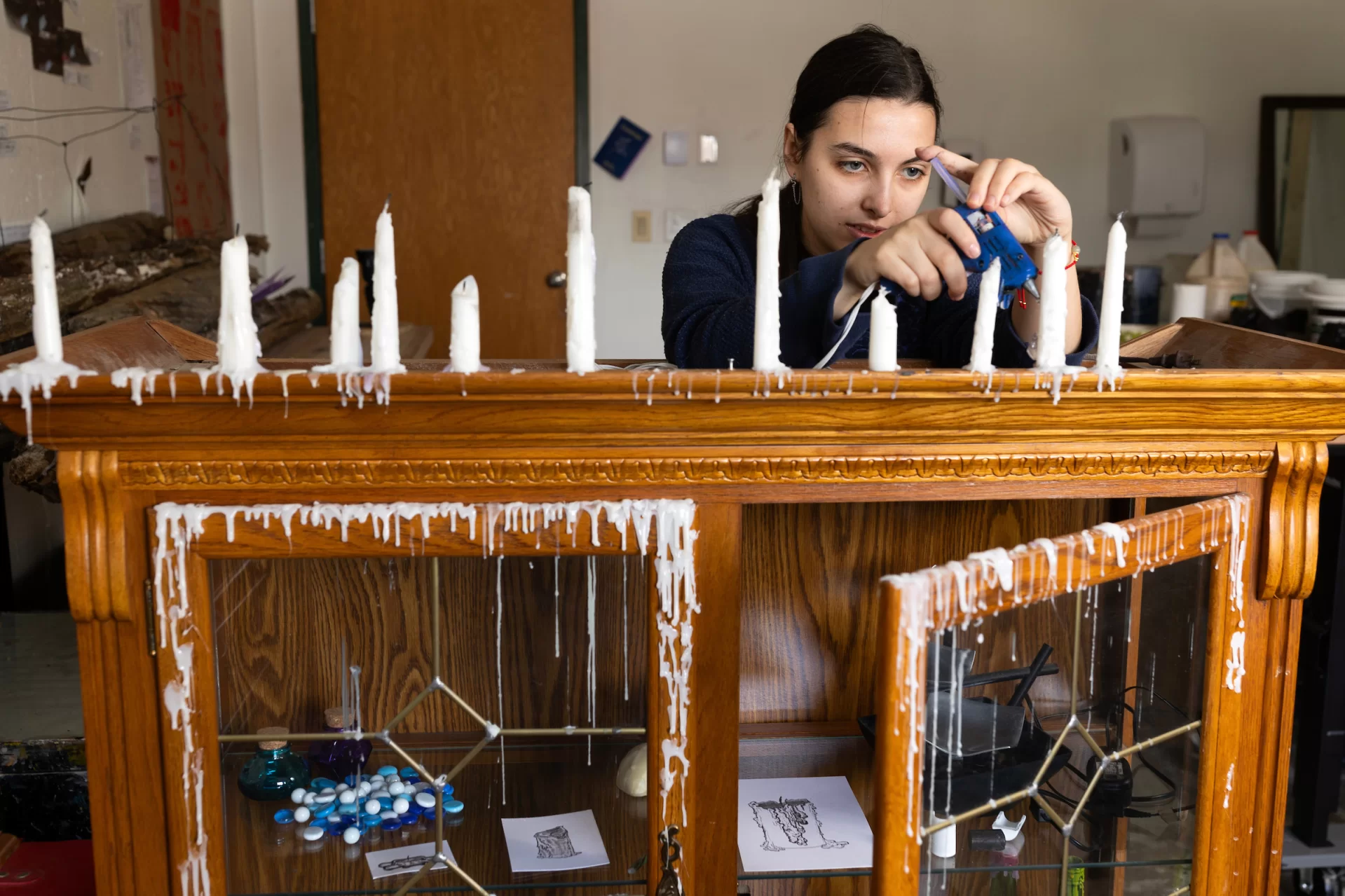
Joseph Vineyard
Joseph Vineyard ’24 of Danville, Vt., created a digitally drawn animation sequence that seeks to convey the overwhelming physical and emotional intensity of a panic attack.
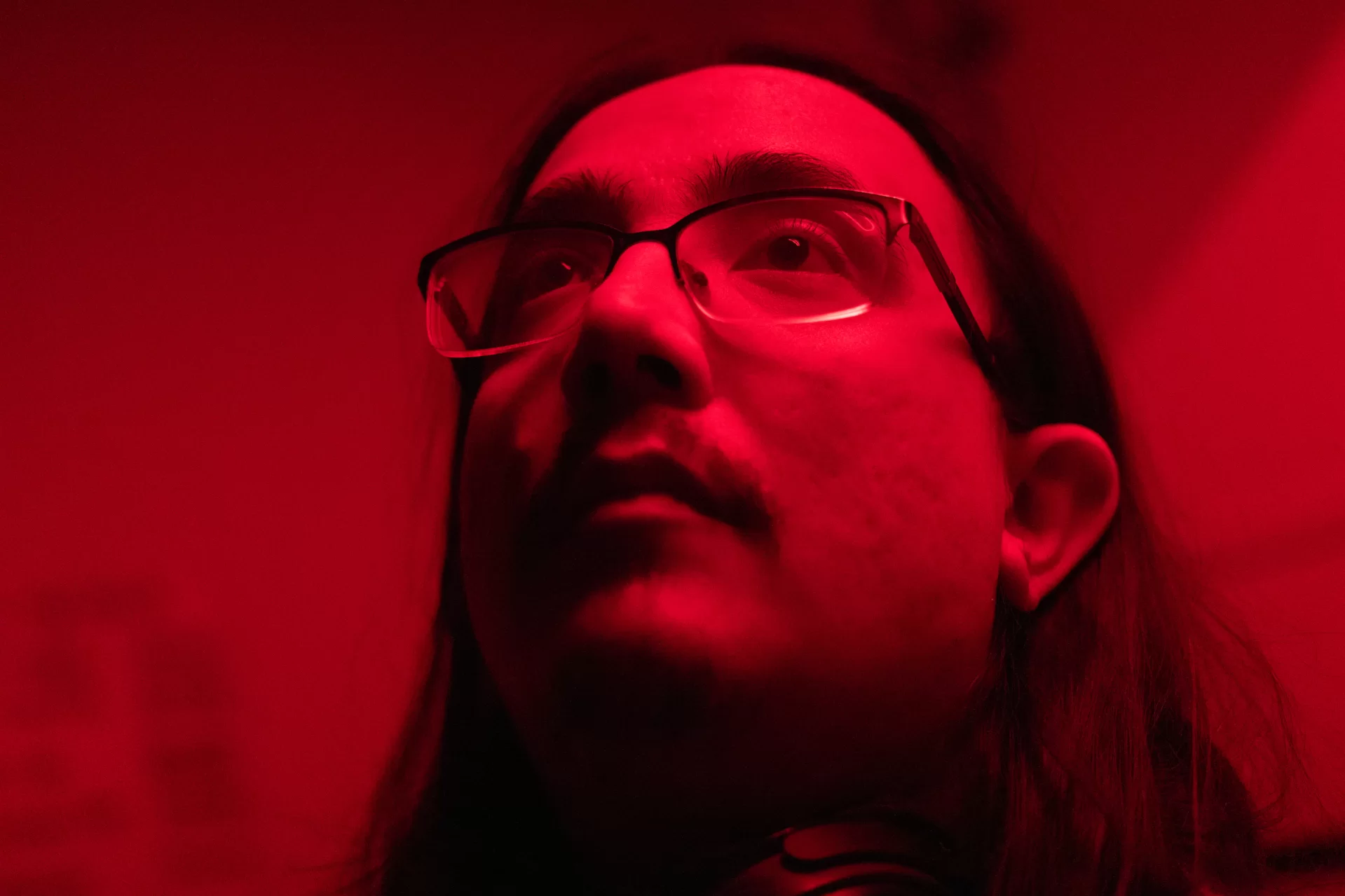
While it’s not possible to convey the universal experience of a panic attack, Vineyard hopes to help those who have never experienced one get a sense of what it is like and to offer affirmation for those who have experienced one.
Vineyard explains it can make one feel as if “their bodies feel suffocated and out of control as if something else has taken over.”
“Art to me is a gateway into an alternate world, a place for the viewer to get lost in and find an experience that reflects or is unlike their own,” Vineyard says.
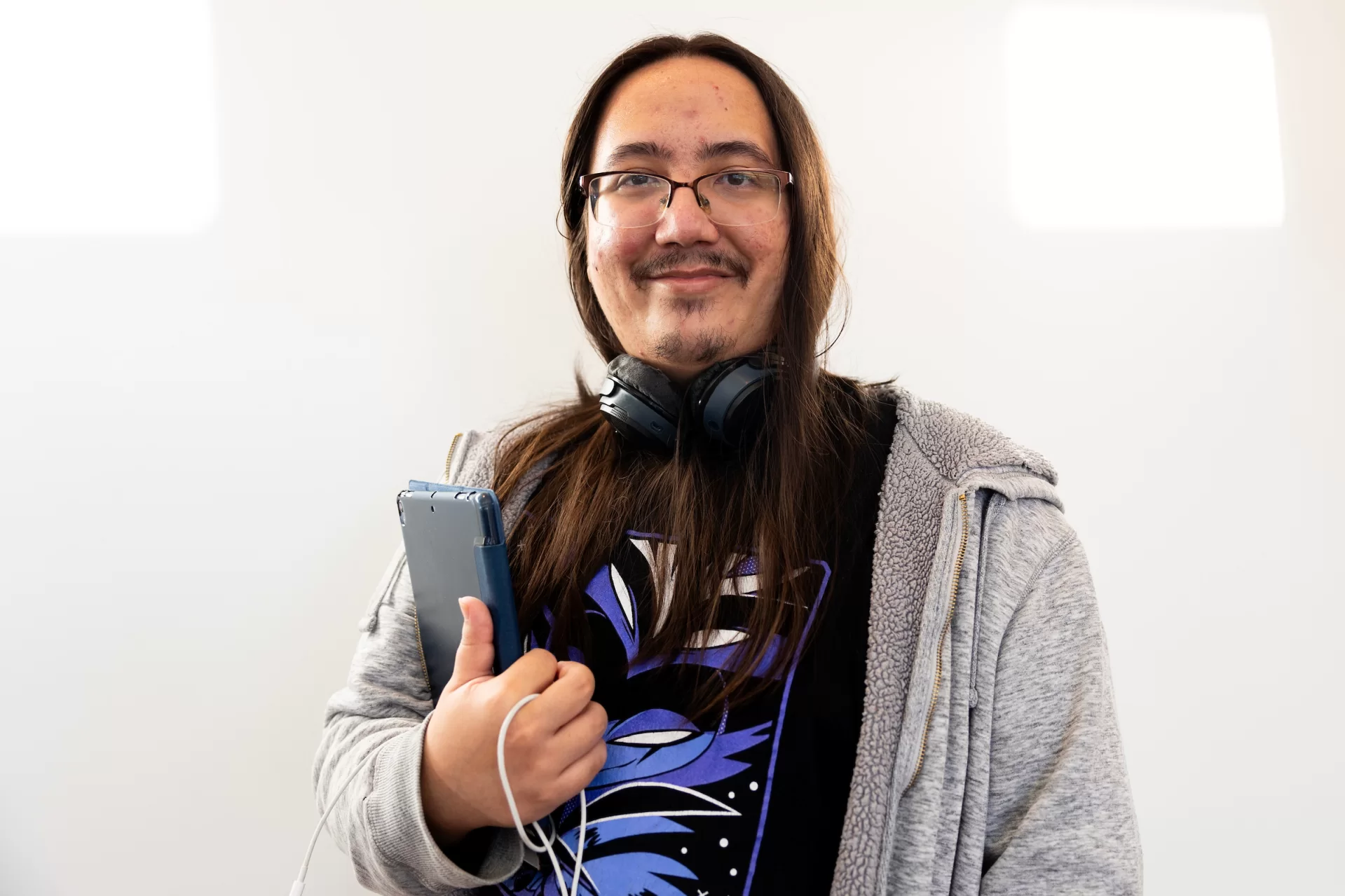
Emma Upton
Emma Upton ’24 of Amherst, N.H. processed emotions from the Oct. 25 shootings in Lewiston through her mixed-media artwork to express “the sorrow, fear, and mourning” she witnessed in her community following the tragedy. It also is a personal expression of her experience during the lockdown.
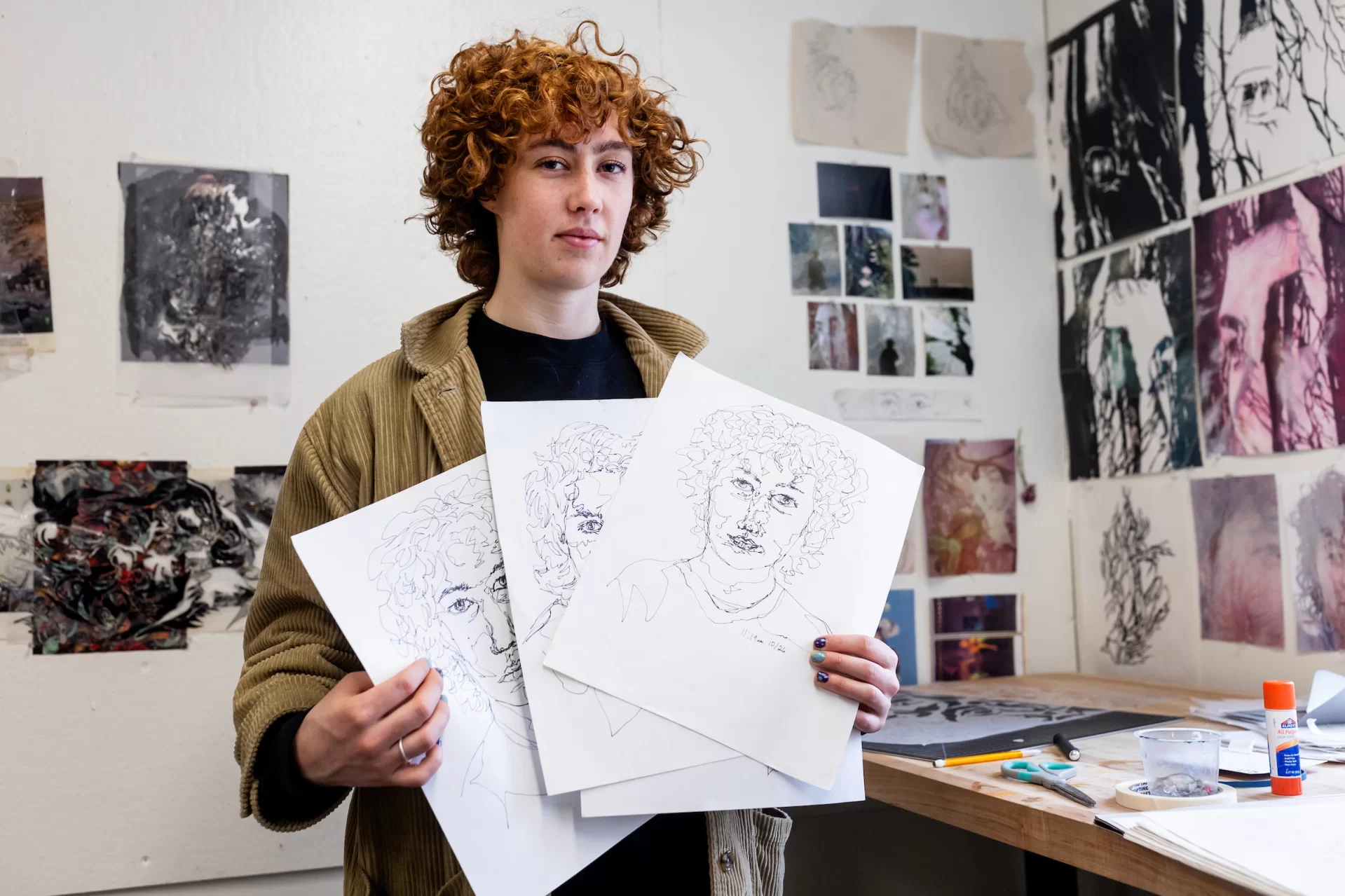
“In the days that followed, I found myself in a state of numb disbelief within the surreal limbo of lockdown. In an attempt to process my emotions, I turned to art. I created a series of 50 continuous line self-portraits that seek to illustrate my internal state of sorrow and uncertainty. These portraits became the foundation of my work which involved abstracting the original self-portraits using a variety of techniques and mediums,” Upton says.
She found abstract forms within the interconnected lines of her self portraits to create a series of new abstract portraits that she then layered with pages from magazines that she later trimmed to reveal areas of light. Stained glass that is also used in the work, she says, creates a “transparent effect and enables the use of lighting that is a uniting element within this series,” while the use of mirrors incorporate the viewers into the artwork.
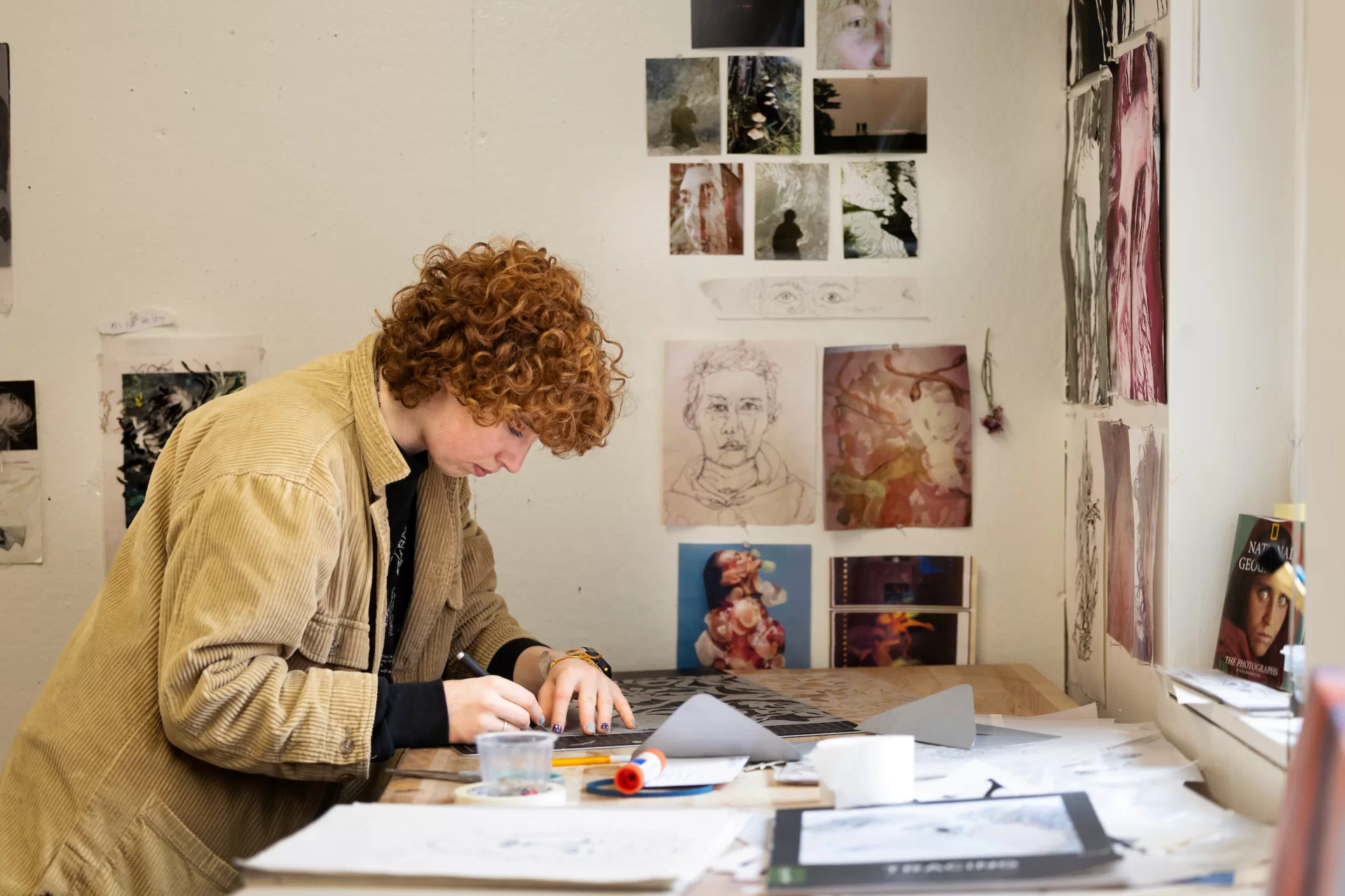
“The material is fundamentally connected to the initial experience during the lockdown, because it incorporates the same fractured mirrors that I looked into while creating the 50 original self-portraits,” Upton said.
